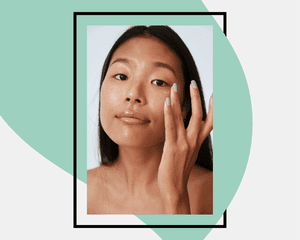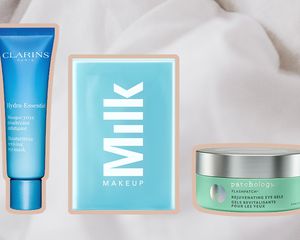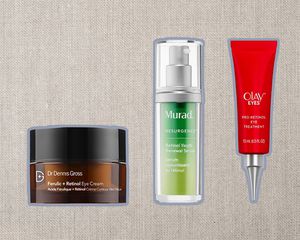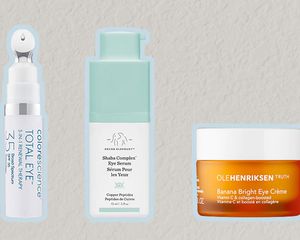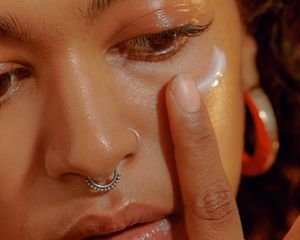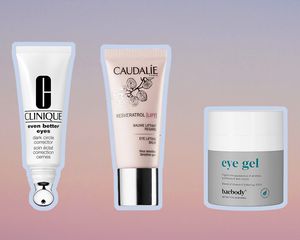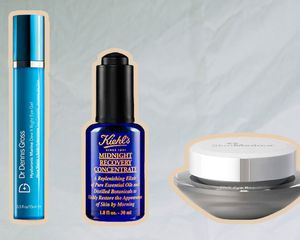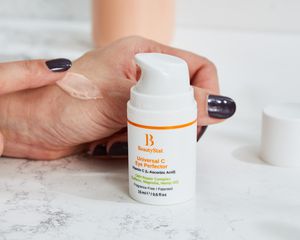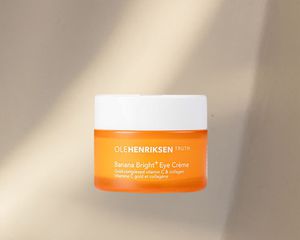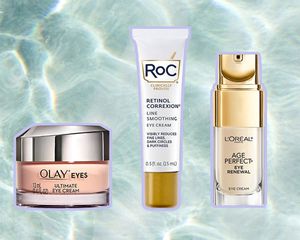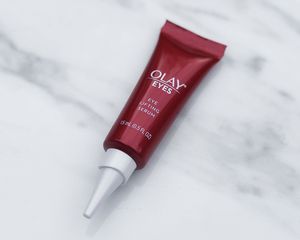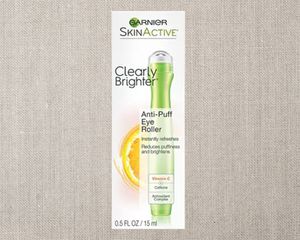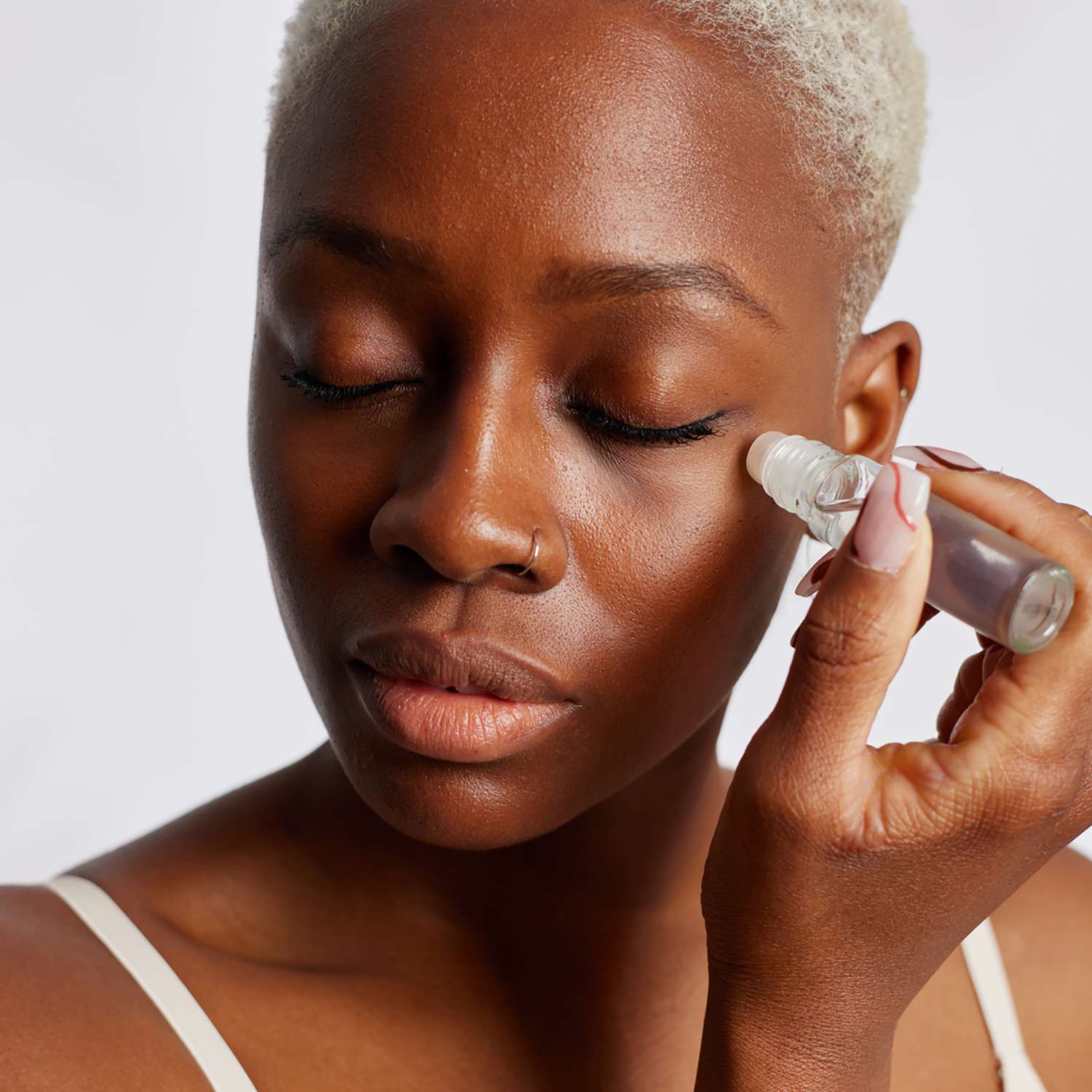
Javier DÃez / Stocksy
Our eyes convey our emotions and expressions—and our perceived youthfulness. Because the difference between a refreshed eye and a tired-looking one can be a major component of how our faces are perceived at large, taking special care of the area around our eyes can yield major benefits.
Eye cream is the simplest way to be intentional about treating our eye area for longevity, and eye creams offer benefits ranging from reducing puffiness to mitigating fine lines. Because many eye creams are priced at a premium, we spoke with board-certified dermatologists Jaimie DeRosa, MD, and Nicole Hayre, MD, to help you get the most out of your usage of them. Ahead, learn how to apply eye cream for the best possible results.
Meet the Expert
- Jaimie DeRosa, MD, is a double board-certified facial plastic surgeon and founder of and lead facial plastic surgeon at DeRosa Center Plastic Surgery & Med Spa in Boston and Palm Beach.
- Nicole Hayre, MD, is an award-winning board-certified dermatologist, speaker, and researcher, as well as the founder of the Cosmetic Dermatology Center in McLean, Virginia.
How to Apply Eye Cream, Step-by-Step
- You'll want to apply your eye cream before you apply your face cream, DeRosa tells us. "The eye cream can help keep any irritating ingredients that may be the facial moisturizer away from the eyes," she says.
- Get the product out of its container without using your hands. "If the product is in a pump, first apply it to your fingertip without touching the pump directly to your fingertip," says Hayre. "If your product is in a jar, use a clean Q-tip to scoop [it out]."
- Place a small amount of eye cream on your upper and lower eyelids. Hayre recommends "a little less than a pea-sized amount" for each.
- Dab the cream into each upper and lower lid; gentle is the name of the game here. "Apply the eye cream gently, using your middle finger," DeRosa instructs. "Dab the product along the orbital bone, starting from the inner corner of the eye to the outside corner. You will want to do this for both the upper and lower eyelids."
When Should Eye Cream Be Used?
Both dermatologists agree that eye cream will yield the best results if used both morning and night, in conjunction with the rest of your skincare routine. DeRosa does note, though, that "for those who are using an eye cream specifically to get more brightening or reduce puffiness, those creams are best used in the mornings." She advises "[reading] the instructions on your eye cream in case it specifies a different regimen."
Ingredients to Look For
If you've been confused by the wide array of featured ingredients in eye creams, you're not alone—it can get tricky quickly. We asked DeRosa and Hayre what their preferred ingredients are.
Caffeine
Usually obtained from coffee or green tea when used in eye creams, DeRosa tells us that "caffeine can help to improve circulation to decrease dark circles and reduce puffiness." There are additional antioxidants in both green tea and coffee that may be beneficial for the eyes, as well: "Green tea is an excellent antioxidant which also has some soothing properties," says Hayre. It's worth noting that those who don't have any puffiness or bags around their eyes may experience tightness if they use eye creams with caffeine.
Vitamin C
Vitamin C is an excellent choice if your concern is under-eye circles. "Vitamin C helps to reduce the production of melanin by inhibiting the enzyme tyrosinase that creates tyrosine, thereby decreasing hyperpigmentation," says DeRosa, who adds that it also helps to brighten eyelid skin.
Kojic acid
Another ingredient ideal for those with dark circles, DeRosa explains that "kojic acid is a skin lightener and brightener derived from fungi that are found during the fermentation of rice and, like vitamin C, it inhibits the formation of tyrosine which is used by melanocytes to produce pigment."
Retinoids
"Retinoids help accelerate skin cell turnover and produce collagen and elastin, as well as inhibit the production of tyrosine by blocking tyrosinase, the enzyme that creates tyrosine, the first building block involved in the production of melanin," says DeRosa. "The use of a retinoid can result in the lightening of hyperpigmentation, as well as reducing fine lines and wrinkles and improving the tone and firmness of the skin."
Niacinamide
This form of B3 performs an array of functions for the skin around our eyes: "It helps to build proteins in the skin to help repair skin damage, reduce hyperpigmentation, strengthen the lipid barrier of the skin, increase skin’s moisture, and decrease inflammation," says DeRosa.
Hyaluronic acid
A key moisturizing ingredient that holds nearly 1,000 times its weight in water, Hayre tells us that she recommends it "to hydrate the delicate eyelid skin." For patients with sensitive skin, she suggests "a basic, hydrating hyaluronic acid gel" as a go-to for eye cream.
Dermatologist Tips for Maximizing Results
Don't get too close
You don't want to risk getting eye cream in your eye. To prevent this, Hayre advises applying eye cream "no closer to the lash line than 2-3 millimeters. This will help to prevent ocular irritation." But fear not, she says: "The cream will naturally spread onto the rest of the lid when you blink."
Some areas might not be a fit
Some creams work to reduce puffiness under your eyes, so that's the only place they should be applied. "If you are using one that is specifically formulated to decrease undereye puffiness, you [should only] apply it to the lower lids and not the upper eyelid skin," says DeRosa. She adds: "Be sure to read the instructions on your eye cream and use these steps as a general guideline."
Be mindful of your frequency
Not all eye creams will work better if used twice a day. "A brightening or de-puffing eye cream may be best used in the mornings whereas one for improvement in eyelid thickness and overall hydration may be best used in the evenings as the skin goes into a healing and reparative mode overnight," says DeRosa.
Be gentle
Knowing how delicate the skin around your eyes is, the most important part of applying eye cream is how gently you do it. "Use your ring finger or pinky to gently spread each application of cream over the rest of the lid," Hayre instructs. "This should be done with repetitive gentle tapping, not a rubbing motion." Adds DeRosa: "Using your middle finger and tapping lightly along the eye bones during application can help to prevent damaging lid skin."
For sensitive skin
Hayre prefers a straight hyaluronic acid gel for those with sensitive skin that can react to certain ingredients. "Look for one that is fragrance-free and lacking parabens and irritants," DeRosa adds.
For oily skin
The last thing you want is an eye cream that makes an oily part of your face even oilier. To prevent this, DeRosa says that "those with oily skin should look for an eye cream that is water-based and oil-free. In general, eye gels may be a great choice since they contain no oil."
For dry skin
A heavier cream is ideal if you have dryer skin. DeRosa explains that a heavier cream "will have a thicker consistency and feel heavy (in a good way) and take longer to evaporate."
For mature skin
Extra hydration may be needed for those with mature skin. "Older skin may need extra hydration if it is thin and dry," says Hayre. "For these patients, I like extra hydration in the mornings and the more active product in the evenings." She explains that an active cream is one with "antioxidants, peptides, and hydroxypinacolone retinoate."

